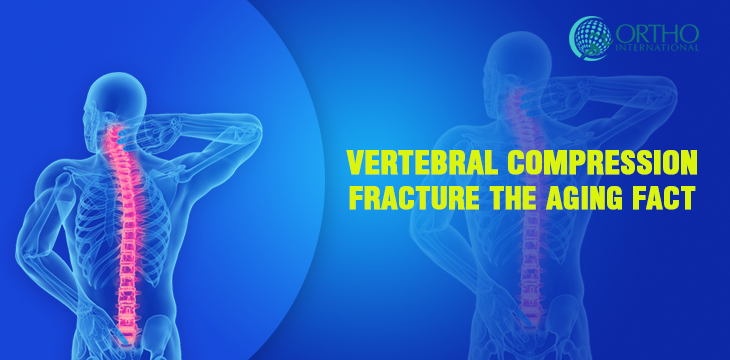Osteoporosis also termed the bone-thinning disease and is believed to strike over 25 million individuals every year and almost 80 percent of people with osteoporosis are women who are aged over 65 years. The stats also reveal that osteoporosis is also responsible for one and a half million fractures each year.
What is a Compression Fracture?
Both osteoporosis and a low bone mass are specific conditions which raise your probabilities of generating a compression fracture by substantial value. It’s true that vertebral compression fractures (VCF) are extremely prevalent in patients with osteoporosis and is seen to influence the female population that too postmenopausal women but the rate and predominance of Vertebral Compression fracture normally increase as patients age.
The recent studies reveal that a huge number i.e. 40% of women age 80 and older generally experience compression fractures. Though the condition is far more popular in women, it nonetheless produces a major health issue even in older men as well. A Vertebral Compression fracture illustrates the type of fracture or breaks in the vertebrae.
Understanding Spine and Vertebrae
We all know that vertebrae are the bones at the back that stack up, one on top of the other, to form a spine. The spine as we all know has an extensive amount of functions which could be summed up as supporting the body weight, allowing movement, and defends the vital parts of the nervous system. In cases of compression fractures causes the vertebrae of the spine to collapse, which in turn makes them shorter. When these collapses occur, pieces of bone may press on the spinal cord and nerves, decreasing the amount of oxygen and blood flow that the spinal cord would normally get.
Causes of Vertebral Compression Fractures (VCFs)
Generally speaking, compression fractures occur mainly because of the bone-thinning condition known as osteoporosis and is more prevalent in women over the age of 50 who have been through menopause. The bones are more fragile than they should be and the vertebrae are not robust enough that the spine fully performs the activities on every single day basis.
This involves easy actions, such as elevating objects, avoiding steps, sliding on the carpet all of these activities increase the risk of a VCF. The most insignificant coughing or sneezing spells may result in compression fractures if you have osteoporosis.
Risk Factors concerning Vertebral Compression Fractures (VCFs)
As stated, one of the greatest risk factors for VCFs are bone disorders such as osteoporosis. Even patients with cancer where the patient is in the last stage of cancer and cancer has spread to the bones may also discover themselves at the aid of VCFs. Individuals suffering from certain types of cancer like lymphoma or multiple myeloma must keep an eye for compression fractures. There might be a condition wherein spinal fracture could become the first signs of cancer.
Even White and Asian women are at a considerable risk of developing osteoporosis. Women who are weaker than the average also have a much greater risk of acquiring the condition. Women are much more likely to develop osteoporosis than men are and even if you are a smoker you might tend to lose bone thickness much faster than those who do not smoke.
Symptoms of Vertebral Compression Fractures (VCFs)
With the onset of compression fractures, they may not exhibit symptoms but your doctor may be able to discover them on an x-ray while looking for something else entirely different. In the later stages, the symptoms may include back pain that deteriorates with time. There is a decrease in overall height and the movement of the spine becomes more limited and activities like trouble bending or twisting becomes more limited. Sufferers may take on a stooped-over posture known as kyphosis.
Symptoms may also include numbness or tingling, weak muscles, difficulty in walking, and loss of bowel/bladder control may occur additionally. Even in cases where the fracture happens quickly, one may feel sudden, severe back pain.
Reference
If you or any one in your in your niche especially elderly members have problem related to their bones. Do not hesitate to meet Dr Abhishek Mishra the best Joint replacement surgeon in India. He is an internationally trained and experienced senior orthopedic and joint replacement surgeon having 15 years of rich scientific experience.
